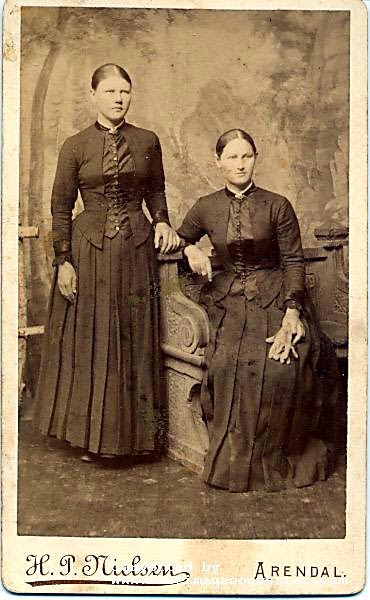 |
| Orange flower water. Photo: Elizabeth Urbach. |
Anyway, my niece is also a budding foodie and baker, and she bought me a vintage cookbook (ca. 1948) for my birthday a few years ago; the result of her purchase is that I try to have the cookbook with me when I go visit my parents' house, whenever my niece is also there, and we try to choose a recipe and bake it together. She likes making cake (we made a Devil's Food Cake, before). This time around, I decided I wanted something lemon for my birthday, and couldn't decide between a lemon pie -- like I made last year for my birthday -- or a sponge cake with lemon curd filling (but I haven't had good luck with sponge cake; last time the cake broke in half when I tried to get it out of the pan). We thought this recipe sounded interesting, and as a bonus, you don't have to separate the eggs! Here is the original recipe:
Moss Rose Cake
2 c. sifted cake
flour
½ tsp. salt
2 tsp. baking
powder
4 eggs
2 c. sugar
½ tsp. almond
extract
1 c. hot milk
Sift flour, salt
and baking powder together 3 times. Beat
eggs, add sugar gradually and beat until thick enough to hold a soft peak. Add flavoring. Fold in flour mixture in small amounts and
add hot milk gradually, mixing quickly until batter is smooth. Turn into lightly greased cake pans. Bake in
moderate (350°F) oven 30 minutes. Makes
3 (8-inch) layers.
 |
| measuring and sifting in process. Photo: Virginia Urbach. |
Yes, you read that right: there is as much sugar in this cake as there is flour! This became an issue for me, as I will explain below. I made a few alterations to the recipe, to accommodate my almond allergy, and the fact that we only had all-purpose flour: I used a scant 2 cups all-purpose flour, and substituted 1/2 tsp. vanilla and 1/2 tsp. orange flower water for the flavoring. I also baked the cake in 2 9-inch square pans, instead of 3 8-inch rounds, because that's what my mom could find in her kitchen.
My niece measured and sifted all the dry ingredients, and she really did sift them 3 times. Meanwhile, in the electric mixer, I beat the eggs until they were thick and fluffy, adding a few tablespoons of sugar at a time; this took several minutes. Then I added the vanilla and orange flower water, and kept beating; the "soft peaks" disappeared when I stopped the mixer to add the flavoring, but they re-appeared immediately when I turned it back on, and the eggs and sugar stayed very fluffy while I folded the dry ingredients in. I had my niece sprinkle a few tablespoons of the flour mixture over the eggs, while I folded them in, alternating with a few tablespoons of hot milk each time. The batter was very smooth, light, and fragrant, and it tasted delicious with the orange flower water. I sprayed the baking pans with baking spray, divided the batter evenly between them, and slid the pans into the preheated 350 degree oven. After 30 minutes, I checked the cakes, and it didn't look like they were done, so I put them back in for another 5 minutes. When they were lightly browned on top, and tested "done" with a skewer, I took them out of the oven to cool slightly in the pans, before removing them to cooling racks.
This is where the amount of sugar in the cake became a problem. The cakes had a beautiful crackly sugar crust on the top, similar to angel food cake, but the sugar in the batter had stuck them to the pans despite the baking spray! I had to run a knife blade around the edges, and then use a long, thin spatula to get under the whole cake so I could loosen it from the pan, resulting in uneven edges and a crumbly look to the underside of the cakes. I decided that I would hide the unevenness with a bunch of lemon curd, which worked very well. The cooling rack left linear imprints on the top of the cake layers, but I thought the cake was so sweet that it would be inedible if I tried to cover the lines with powdered sugar, which would be my first solution to such a problem. If I'd had some unsweetened whipped cream, that would have worked well, too.
 |
| the crumbly underside of the cake layers. Photo: Elizabeth Urbach. |
I thought the cake was a good one, because despite all the handling to get it out of the pans, the cake layers didn't break (unlike the last time I made sponge cake), yet it was light and fluffy. The flavor was good, although I think I used too much vanilla, because I couldn't taste the orange flower water at all, once the cake was baked. I also thought that the cake was too sweet for my taste! I'm glad I had lemon curd as the filling, because the tartness worked well with the sweet cake. As for the lemon curd, it was a purchased curd in a jar -- from the collection of Downton Abbey-inspired products available at some stores, so it didn't have the same texture as my homemade Meyer lemon curd, but it wasn't jelly-like (which is a good thing) and I will eat it happily until I can get my hands on enough Meyer lemons to make the homemade kind.
As for the cake, I would cut the sugar back to 1 1/2 cups the next time I make this cake, as well as greasing the pans liberally with butter, and maybe also lining the pans with baking paper! Despite being from a book first published in 1948, this recipe is very similar to much older sponge cake recipes, and was easy to make. My family liked it, and this cake would work equally well with raspberry or apricot jam, or a strawberry orange jam (with a bit of tartness) as the filling in between layers.
 |
| Moss Rose Cake with Lemon Curd Filling. Photo: Elizabeth Urbach. |
We didn't however, discover why the cake is called "Moss Rose Cake"!





















1 comment:
FYI
"Moss Rose Cake" was the favorite food for U.S. President James Buchanan. He was president 1857 to 1861... so this recipe goes back to the 1800s.
Post a Comment